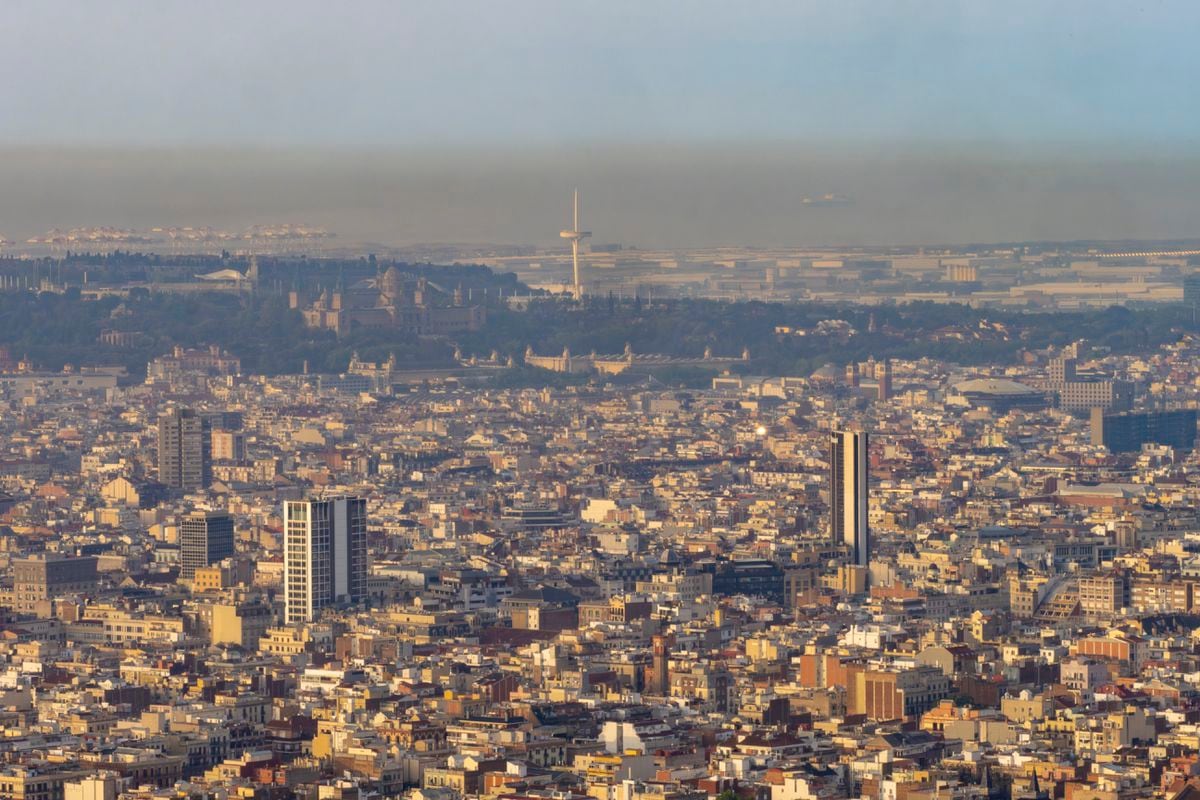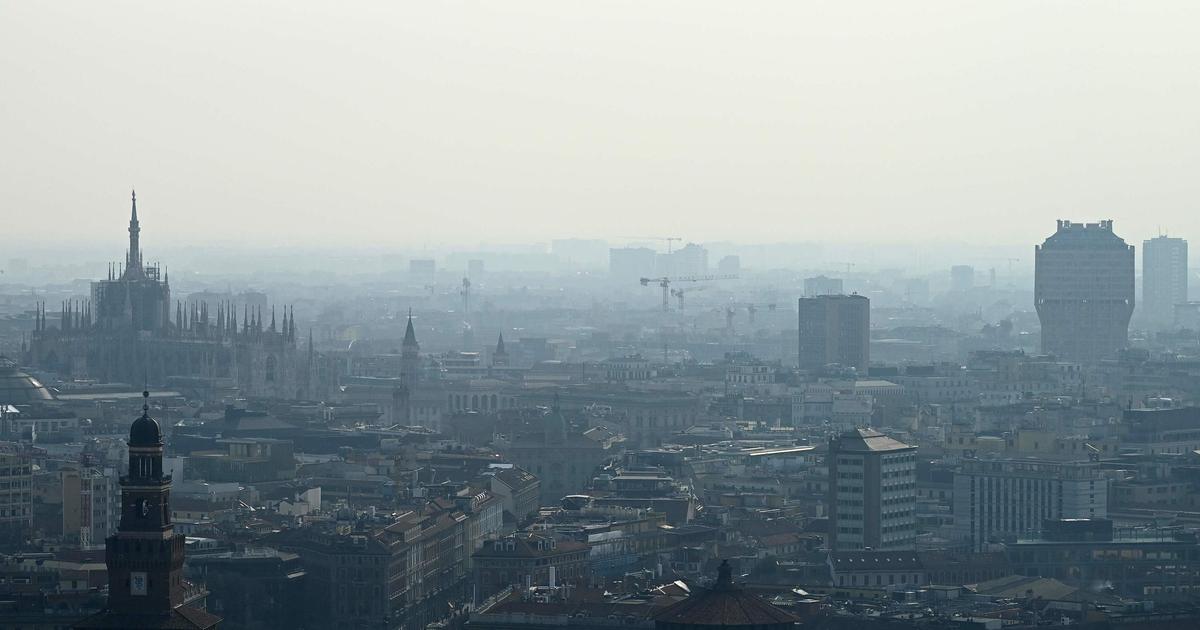The new air quality thresholds just set by the World Health Organization (WHO) pose a huge challenge for Spanish cities. Because the starting situation is not good: only seven of the 80 most populated cities in Spain are below the new annual exposure limit to nitrogen dioxide (NO₂) recommended by the WHO in its guidelines. If the focus is raised to the rest of the European Union, the situation does not improve: none of the 27 capitals of the member states would now comply with the recommendation regarding this pollutant, which is closely related in cities to the combustion engines of the gasoline and diesel vehicles. This is clear from the analysis carried out by EL PAÍS based on data from the European Environment Agency (EEA) and taking as a reference year 2019 -in 2020,In the year of the pandemic, the contamination data was completely conditioned by the lockdowns.
Until now, the WHO considered the safe limit for annual exposure to NO₂ to be 40 micrograms per cubic meter. And practically all the air quality control stations in the most populated Spanish cities were, on average, below that limit. But, after analyzing the scientific literature and after 15 years without modifying these guidelines, the WHO decided this week to lower that level of safety to a quarter, down to 10 micrograms. This implies that only seven cities would be within the recommended margins if the 2019 data is taken as a starting point. They are Badajoz, Benidorm, Cáceres, Elda, Palencia, Telde and Zamora.
Most of these 80 large cities moved in a range of between 10 and 30 micrograms per cubic meter in 2019. But in the case of the ten Spanish cities with the worst data on average, the new limit of 10 micrograms was more than tripled. That list was headed by Granada (43 micrograms), Coslada (39), Mollet del Vallès (39), Murcia (38) and Terrassa (37). They are followed by Leganés (36), Madrid (35), Granollers (35), Getafe (33) and Barcelona (32).
NO₂ is a pollutant that causes problems in the respiratory system and is closely linked to combustion vehicles in urban environments.
"What the WHO establishes now based on the scientific basis are the new values from which it has been seen that there are negative effects on health," says Xavier Querol, a researcher at the CSIC and one of the experts who have collaborated with the World Health Organization in the revision of air quality guidelines.
Querol considers it very important to distinguish between the new thresholds established by the WHO and the legal limits that each nation decides to set itself.
The recommendations of this organization are not legally binding.
Each country decides whether to bring them into its legislation or not.
In the case of the European Union, the community authorities had adopted as their own the annual limit of 40 micrograms per cubic meter, which the WHO set in 2005. And Spain, which has had to incorporate these thresholds into its legislation, has been denounced by the European Commission for repeatedly breaching these limits for a decade in Madrid and Barcelona.
The European Commission is now in the process of revising its air quality directive and it is expected that the community institutions will end up raising the legal limits of the main pollutants. But this change and its transposition is not "imminent", recalls Julio Díaz, also a specialist in air quality at the National School of Health of the Carlos III Health Institute. "There are still years for the EU countries to finish crossing the new limits," he adds. Furthermore, it is not at all clear that the EU will suddenly adopt the restrictive 10 microgram limit recommended by the WHO for NO₂. Querol considers that the future directive is likely to bet on a progressive tightening of legal limits, as was already the case in the 1999 European air quality standard.
Not only would Spain have a serious compliance problem if the new WHO thresholds for nitrogen dioxide were adopted.
According to the same data from the European Environment Agency, in 2019 all EU capitals exceeded the maximum exposure of 10 micrograms per cubic meter.
The worst results were recorded in Bucharest (57.18 micrograms), in Rome (38.9), Paris (37.54), Berlin (37.13) and Athens (36.89).
Other pollutants
The WHO has not only tightened the safety limits for nitrogen dioxide. For PM₂, ₅ —particles less than 2.5 microns in diameter— it has been decided to halve the maximum recommended annual exposure: it goes from a value of 10 micrograms per cubic meter to five. In the case of the largest particles, PM₁₀, the annual limit goes from 20 micrograms per cubic meter to 15. If these new limits are taken as a reference, the 80 most populated Spanish cities would be above what the WHO recommends.
This, again, would not be a legal breach.
In the case of particles, European regulations were already less restrictive than the World Health Organization recommended before this latest revision of its guidelines.
And it remains to be seen how far the community institutions will go in updating their directive on air quality regarding particles.
Julio Díaz admits that in the scientific world it has been surprising that the WHO has lowered both the recommended exposure limits for particles and nitrogen dioxide.
But this researcher points out that in the last 15 years, many scientific articles have been published in which it was already warned that fewer exposures than those recommended by this international organization were harmful to human health.
Díaz insists on the need for the legal limits that are finally imposed to be "met."
For his part, Querol hopes that the recommendations put on the table now for the WHO will help countries set "stricter objectives to improve air quality."
Because setting pollution reduction goals serves to save lives.
"In 1990 there were a million premature deaths in the European Union due to particle pollution, compared to 374,000 today," Querol recalls.
You can follow CLIMA Y MEDIO AMBIENTE on
and
, or sign up here to receive
our weekly newsletter





/cloudfront-eu-central-1.images.arcpublishing.com/prisa/VPFDJ6LOFBD4DJB77PGQNQCUCE.jpg)









